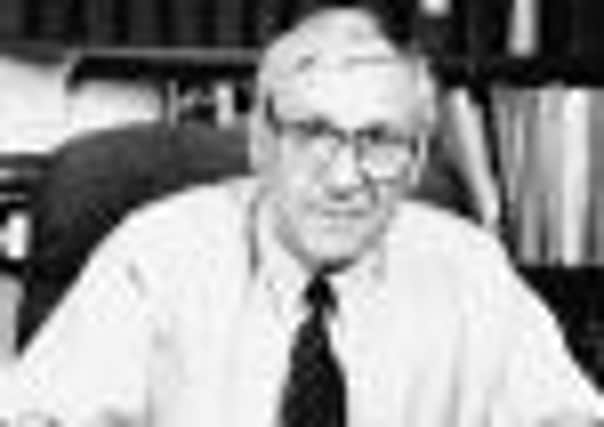Obituary: Robin M Hochstrasser


TRIBUTES have been paid to one of the world’s foremost scientists in using lasers for research.
Robin M Hochstrasser was a professor and distinguished researcher in the department of chemistry at the University of Pennsylvania in Philadelphia for the past 50 years.
Advertisement
Hide AdAdvertisement
Hide AdHe was born in Edinburgh in 1931 to Margaret Main, one of the Main fishmongers in Morningside, and Richard Hochstrasser, who later moved to London and was a furrier.
Robin was evacuated during the Second World War to the Newtondon estate in the Borders.
He received his degree from Heriot-Watt University and his PhD from the University of Edinburgh. His thesis research was concerned with surface photochemistry, which aroused his interest in fundamental aspects of how light interacted with molecules.
There was a small detour in his career for two years, when he was conscripted into the Royal Air Force, where, as a pilot officer, he taught electronics to navigators so they could use and rapidly service new high-altitude radar bombsights.
In 1957, he joined the faculty at the University of British Columbia, and in 1963 moved to the University of Pennsylvania. In 1963, Robin brought modern research to the university on how light interacts with molecules, a field known as molecular spectroscopy.
In the late 1960s, he – along with just a few other chemists worldwide – began to adapt various types of lasers for answering questions in chemistry and biology. This was the beginning of the lasers in science revolution that continues to this day.
His pioneering studies led to his development in the 1990s of a new kind of powerful spectroscopy, called two-dimensional infrared spectroscopy. In the past few years, he used his invention to study human diseases, such as AIDS, Alzheimer’s, and influenza.
His knowledge and expertise have had a wide-ranging impact at the university in physics, chemistry, biology and medicine.
Advertisement
Hide AdAdvertisement
Hide AdAs a result of the depth and breadth of his research, Robin was widely regarded as a world leader in molecular spectroscopy, who left his mark on science, not only by his own original research, but also by inspiring and creating many scientific opportunities for others.
He had a long list of honours and awards, one of which was being made an Honorary Fellow at the Royal Society of Edinburgh in 2008.
He published more than 500 original scientific papers and two books, Behaviour of Electrons in Atoms and Molecular Aspects of Symmetry.
Robin married Carol Ostby, from Vancouver, whom he met at the University of British Columbia. They had two children – Polly, who pre-deceased him, and Jennie.